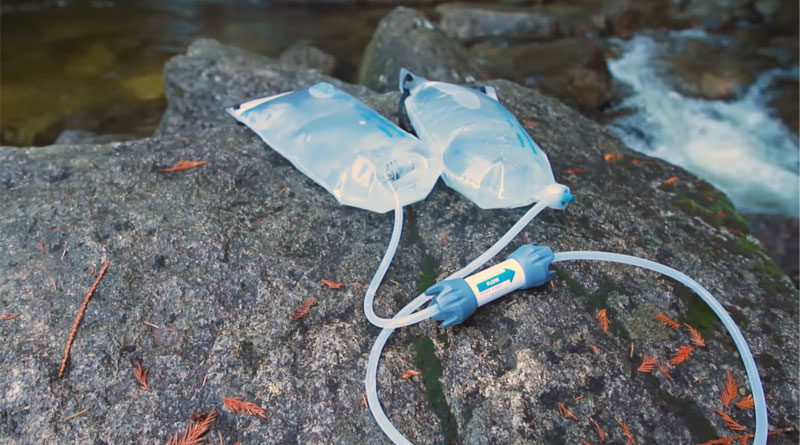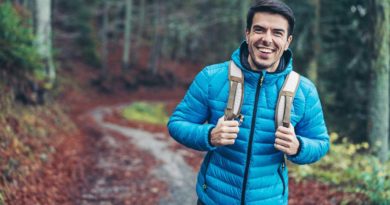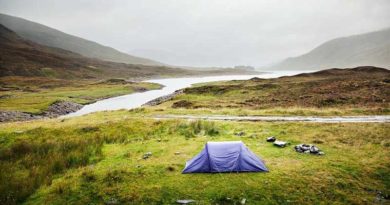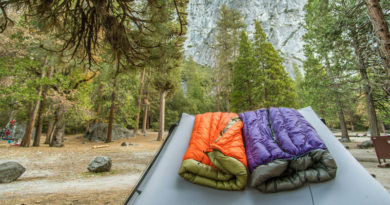Best Gravity Water Filters for Backpacking 2024
You need water on your backpacking trip but you can’t bring gallons of water with you because that would be too much weight to carry around. The water you find on the trail can be polluted so it is essential to filter the water before consuming it. Among many filter types, gravity water filters are attractive to many outdoor enthusiasts because they don’t require you to do anything except collect water. They also have a bigger capacity than other filter types.
So, let gravity do the work by choosing one of these lightweight, efficient, and packable water filters for your next backcountry trip.
1. Platypus GravityWorks

Weight: 11.5 oz.
Filter Life: 1500L
Filter Pore Size: 0.2µm
Flow Rate: 1.75L/min
Capacity: 8L
The Platypus GravityWorks has set a standard in water filtering that is hard to beat. It is one of the most convenient water filters on the market, which doesn’t require you to do anything except for collecting water and you get a good quantity of drinking water in a small amount of time. GravityWorks comes with two bags, one for dirty water and one for clean water, a filter, and the tubing to connect the bags. You don’t have to pump, squeeze, or do anything. All you have to do is collect the dirty water in one bag and hang it above the other bag. Gravity does all the work for you.
This water filter also has an impressive flow rate of 1.75 liters per minute, which means, you get 4 liters of water in less than 3 minutes. That is a lot of water in a very short period if you are thirsty after a long hike. The filter is great for small groups where you can retrieve enough water for the whole group quickly. However, the apparatus is not small. It takes up volume and it weighs 11.5 ounces – heavy for a water filter. It’s best for groups where weight is shared. You would also have trouble retrieving water if you don’t have a deep enough water source. It is also at the high end of the spectrum regarding cost.
What I like: Fast and hands-free filtration with a great flow rate.
What I don’t like: Clogs with heavy sediments and a little expensive
2. Katadyn Gravity BeFree

Weight: 6.8 oz.
Filter Life: 1000L
Filter Pore Size: 0.1µm
Flow Rate: 2L/min
Capacity: 3L
This is a lightweight and pump-free method for filtering lots of water. Gravity filters like this one work while you set up your campsite. The system weighs just seven ounces and it packs down small. This gravity-based filtration system filters up to two quarts per minute and it’s labor-free. The system is very easy to use. You just fill the reservoir, use the integrated handle to hang it up, and wait. When the water reaches the hose at the bottom, it’s safe to drink. The system employs a 0.1-micron microfilter to remove over 99% of bacteria and protozoa including Giardia and Cryptosporidium.
The filter’s hollow fiber EZ-Clean membrane is easy to clean without the need for backflushing, brushes, or other cleaning tools. Simply shake or swish the EZ-Clean Membrane to remove debris. Each EZ-Clean membrane can filter up to a thousand liters depending on the water quality. While dirty water will decrease the life of the filter, replacement membrane elements can be purchased to extend the life of the system. At two quarts a minute, you can use this filter to quickly fill everyone’s water bottles at camp. If you don’t want to wait for camp, I’ve heard of backpackers hanging gravity filters from their backpacks so they can filter water as they hike.
What I like: Competitive flow rate, packs down reasonably small for backpacking, easy to use
What I don’t like: Filter life is shorter considering its flow rate, no separate bag for water storage
See the Katadyn Gravity BeFree
3. mini well Ultralight Filter

Weight: 3 oz.
Filter Life: 2000L
Filter Pore Size: 0.1µm
Flow Rate: 0.6L/min
Capacity: N/A
The mini-well Ultralight Gravity Water Filter is a cheap option that will last you well for your hiking adventures. It is lightweight, has a reasonable filtering rate, and can be used for ultralight backpacking. The inline filter is versatile like the filters mentioned above. It can be used as an inline filter with the gravity system and it can also be used as a standalone water filter. The maximum flow rate of the filter is 600ml per minute. It is less than others found in the market but it’s not like you would be drinking 600ml in a minute unless you are thirsty for two days.
The filter can last up to 2000 liters of water but with proper care and frequent backwash, the life of the filter can be extended. The filter is supplied with a single bag to hold dirty water. But the filter with the reservoir only weighs 2 ounces. However, the downside is that you would have to stand with the filter to fill your water bottles. The overall quality of the gravity filter also feels cheap. But this is a cheap option and it works well for a couple of people.
What I like: Very cheap, lightweight, and has a decent filter lifespan
What I don’t like: Easily get clogged with heavy sediment in the water.
See the miniwell Ultralight Filter
4. MSR Autoflow XL
Weight: 12 oz.
Filter Life: 1500L
Filter Pore Size: 0.2µm
Flow Rate: 1.75L/min
Capacity: 10L
This system uses high-tech hollow fiber technology to quickly and efficiently remove all sediment and nasty bacteria from your water supply. With the AutoFlow system, you get a bunch of different parts but they all work seamlessly to provide effortless filtration. Just fill the reservoir up with dirty water, attach the hose filter and output hose, hang up the reservoir, and let the system work. You do get a nifty little clamp to stop the flow of water so you can seamlessly swap from bottle to bottle or cooking pot. There’s also an adapter that’ll fit onto most standard wide-mouth bottles so you can easily refill without fear of knocking over your bottle or contaminating the water.
The filter works through hollow fiber technology. What you’ve got inside are tons of small hair-like fibers. Each of them is built from a super porous membrane so water molecules can pass through but bacteria and sediment cannot. After a few filter cycles using super dirty water, if you find that the flow rate starts to slow, you can backflush the filter to refresh its capacity. I recommend this as a basecamp-style filter or maybe something kayakers or people who spend lots of time near water sources would use.
What I like: High capacity bag included, very efficient
What I don’t like: Requires frequent maintenance, the flow rate is not as fast as advertised
5. SimPure Portable Purifier

Weight: 3.2 oz.
Filter Life: 5000L
Filter Pore Size: 0.1µm
Flow Rate: 0.45L/min
Capacity: 3L
The SimPure Portable Purifier is another great filter on this list that works just like the Waterdrop Straw Filter and the WADEO Camp Gravity Filter mentioned below. But it is extremely lightweight for a gravity filter making it ideal for ultra-lightweight backpacking. The whole apparatus weighs only 3.2 ounces. That is feather-light for a gravity filter. The versatility of the filter is the same as that of the ones mentioned above. The filter can be used in many different ways to get clean water.
This filter can filter up to an impressive 27 liters of water per hour. The inline filter features a 3-stage filtering system instead of a 4-stage as found in the filters above. But with an average pore size of 0.1 microns, the filter can get rid of 99.99% of contaminants. The inline filter also features an activated carbon layer to remove bad taste and foul odor from water. The filter also has a 5000-liter capacity. Before using the water filter, you would have to get it wet, according to the manufacturer’s instructions, for fast-flowing water. However, the filter does tend to clog completely, not from mud or sediments. But the fibers of the filter block the filter itself. But SimPure has great support and they replace the filter immediately.
What I like: Lightweight for a gravity filter and produces a good water taste
What I don’t like: Difficult to backflush and clog easily
See the SimPure Portable Purifier
6. MSR Trail Base

Weight: 1 lb.
Filter Life: 1500L
Filter Pore Size: 0.2µm
Flow Rate: 1L/min
Capacity: 4L
MSR Trail Base water filter kit is one of the most versatile filtration packages that I’ve found lately. It combines elements from your standard gravity-style filter system but uses MSR’s awesome little TrailShot filter as well. This gives you the option to go ultralight and fast with just the TrailShot or you can use the whole system for camping. There isn’t an outdoor activity where I wouldn’t see this thing being useful. Hikers, backpackers, runners, bikers, paddlers, climbers, or anyone out there could use this system.
The components include a large dirty water bag with a quick connection point for the tubing. You’ll get a clean water reservoir with an MSR easy-to-use cap system to top it off. You get an MSR TrailShot microfilter. The TrailShot alone weighs right around five ounces and can filter a liter of water per minute, which is fast for such a small unit. The whole kit has a weight of a little over a pound. In terms of versatility, it’s neat. You’ve got the TrailShot which you can use by itself or you can use the clean reservoir to transport filtered water if you need to. The reservoir cap makes it easy to drink directly out of filer bottles or it can be opened totally for cleaning.
Finally, you’ve got the whole system to use at a base camp or a campground. Both reservoirs are made from a durable flexible material with RF welded seams on the outside. The filter uses hollow fiber technology and the membrane itself has a pore size of 0.2 microns, which makes it effective against bacteria, protozoa, and particulates. The filter itself is easy to maintain in the field and you can replace that filter cartridge when it reaches its end of life.
What I like: The 2-in-1 filtration system is versatile requires less effort, great water quality
What I don’t like: Heavy, expensive, and not very packable
7. LifeStraw Flex

Weight: 5.7 oz.
Filter Life: 2000L
Filter Pore Size: 0.2µm
Flow Rate: 0.5L/min
Capacity: 3.7L
The Platypus GravityWorks above costs a lot and weighs a lot. But you can cut down that weight and that cost by almost half. Enter the LifeStraw Flex Gravity. The Flex Gravity is a budget solution for those who don’t want to spend a whole lot on a gravity water filter. This water filter is not exactly ideal for small groups, but it makes sense in an ultra-lightweight setting. The Flex Gravity weighs only 5.7 ounces which is almost half the weight as the GravityWorks. But how does it achieve such low weight?
The Flex Gravity uses a single-bag setup instead of a two-bag setup. You don’t get a reservoir for clean water. Instead, the inline filter has a cap to shut the flow of the water when you don’t need it. But it also works well with a hydration reservoir. However, the flow rate of the Flex Gravity is slow, only 0.5 liters per minute as compared to 1.75 liters per minute of GravityWorks. You would have to stand longer to collect the water. The quality is also not the best. LifeStraw products do feel cheap and there are complaints about leaks from the bag and inline filter. But simplicity and a low price make it a great option.
What I like: Lightweight, inexpensive, 2-stage filtration
What I don’t like: Leakage issues and requires frequent maintenance
8. Waterdrop Portable Straw Filter

Weight: 1 lb.
Filter Life: 378,541L
Filter Pore Size: 0.1µm
Flow Rate: 0.55L/min
Capacity: 3.7L
The Waterdrop Portable Straw Filter is a small filter on its own that allows you to have filtered water on the go. It is also hell cheap and is of great value considering the life of the filter. Combined with its gravity system, the Straw Filter becomes a beast. It comes along with two bags; one for dirty water, and the other for storing clean water. The filtering rate is so fast that this gravity filter can give you around 1.5 gallons of clean water in under 10 minutes. The huge amount of water makes this gravity filter ideal for moderate to large groups.
The Straw Filter also provides versatility in how you get your clean water. You can fit it over a water bottle or simply place it on the water surface in a stream or pond. The filter is so light that you can store it in your pocket. With a 0.1 micron filter, the Straw Filter cleans up to 99% of the water. The coconut shell also makes the water taste a lot better. The water filter capacity is a whopping 100,000 gallons. That’s almost a lifetime with regular use. However, the gravity apparatus weighs a lot. So, it is only better for groups that share the weight. The filter requires it to be backwashed after every use which can be tedious.
What I like: 100,000 gallons of filter life, affordable, and does a good job
What I don’t like: A bit tricky to set up and the plastic fixture is hard to use
See the Waterdrop Portable Straw Filter
9. WADEO Camp Gravity Filter

Weight: Not specified
Filter Life: 5000L
Filter Pore Size: Not specified
Flow Rate: 0.3L/min
Capacity: 3L
The WADEO Camp Gravity Filter is just like the Portable Straw Filter from Waterdrop mentioned above. But it’s cheaper and comes with a smaller bag. You can term it a gravity filter on a budget. It is ideal for a small group and even solo use. The filter comes with a few accessories that help you with the cleaning and maintenance of the apparatus. The bag supplied with the filter is only 3 liters but the apparatus is simple to use. The bag features food-grade silicone and is also foldable to reduce the packing volume of the filter.
The inline filter uses a 4-stage filtering system that filters up to 99.99% of water impurities. The activated carbon filter also makes the water taste better. The filter can also be used by itself on bottles and water surfaces. You can also use the tube with the filter like a long straw. It requires backwash after every use. Thankfully, the backwash device included with the filter makes it easy to backwash the filter. However, with a single bag, you would have to stand to collect water. The filter capacity is only 5000 liters which is better than the Platypus GravityWorks but still, far less than the Waterdrop Portable Straw Filter mentioned above.
What I like: With the filter and the host, you can drink directly from rivers.
What I don’t like: When the bladder is full, it’s difficult to put on the cap and has a slow flow rate.
See the WADEO Camp Gravity Filter
Gravity Filters for Backpacking: Comparison Table
| FILTER | WEIGHT | FILTER LIFE | PORE SIZE | FLOW RATE | CAPACITY |
|---|---|---|---|---|---|
| Platypus GravityWorks | 11.5 oz. | 1500L | 0.2µm | 1.75L/min | 8L |
| Katadyn Gravity BeFree | 6.8 oz. | 1000L | 0.1µm | 2L/min | 3L |
| miniwell Ultralight Filter | 3 oz. | 2000L | 0.1µm | 0.6L/min | N/A |
| MSR Autoflow XL | 12 oz. | 1500L | 0.2µm | 1.75L/min | 10L |
| SimPure Portable Purifier | 3.2 oz. | 5000L | 0.1µm | 0.45L/min | 3L |
| MSR Trail Base | 1 lb. | 1500L | 0.2µm | 1L/min | 4L |
| LifeStraw Flex | 5.7 oz. | 2000L | 0.2µm | 0.5L/min | 3.7L |
| Waterdrop Portable Straw Filter | 1 lb. | 378,541L | 0.1µm | 0.55L/min | 3.7L |
| WADEO Camp Gravity Filter | Not specified | 5000L | Not specified | 0.3L/min | 3L |
How to Choose a Water Filter for Backpacking?
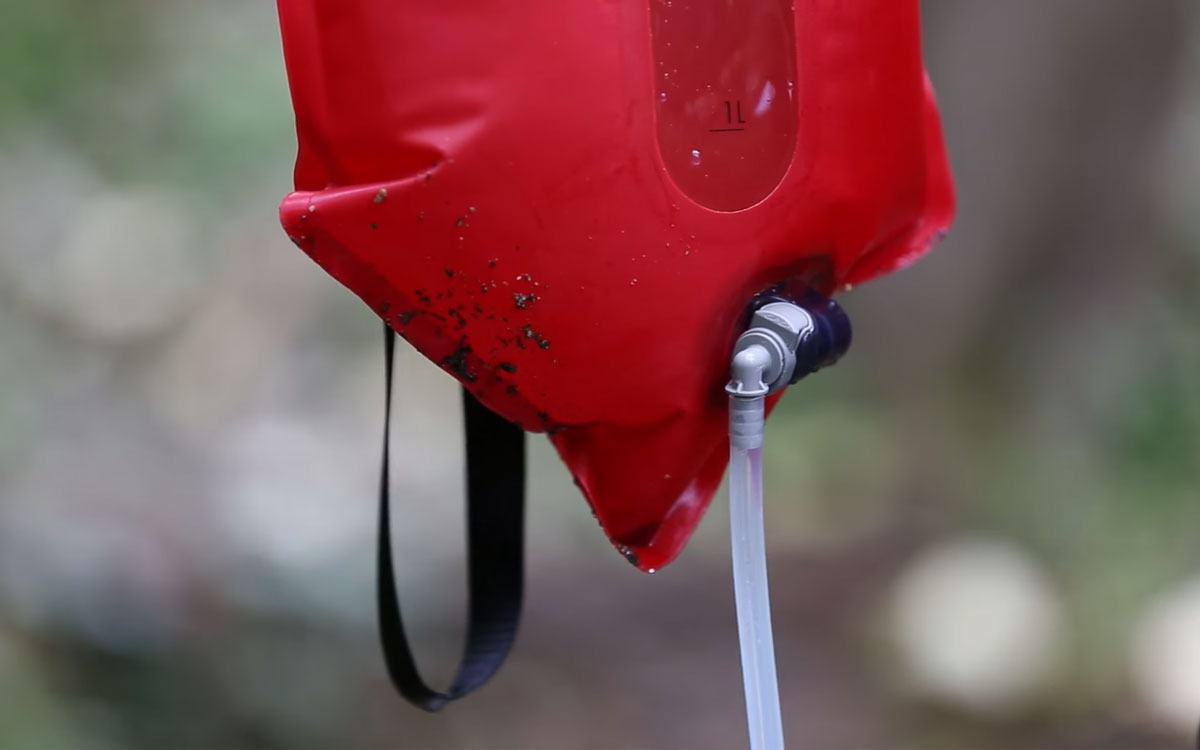
With various types of filters and purifiers on the market, choosing one that fulfills your needs can become confusing. But this guide can help you make the right choice based on your nature of use.
Types of Water Filters and Purifiers
There are several types of water filters and purifiers that you can use on your hiking trip. The most common types are as follows:
Gravity Filters
Gravity filters use an inline filter. These filters are best for groups, base camping, and any time you need large quantities of water. The best thing about gravity filters, as we have seen throughout the article, is that they don’t require you to put any effort into it except for collecting dirty and clean water. You can do something else while gravity cleans the water.
Some gravity filters have a separate reservoir for clean water. Others only provide a bag for dirty water while you have to carry a bottle or something to collect the water. Some filters also allow you to drink directly from the tube.
Nowadays, the inline filters of many gravity filters can be used on their own by attaching them directly to water bottles like many options mentioned above. These filters are lightweight and are ideal for solo travelers.
But you have to be aware that gravity filters are not for everyone. Gravity filters are heavy and they are better for group settings where the weight is shared among hikers. You would also need deep water sources otherwise you would have difficulty collecting water. Setting up gravity filters also takes time. You would also need somewhere to hang the filter.
Pump Filter
Pump filters are a great way to get clean water for a small group of people or when you have a shallow water source. A mechanical pump sucks water from the source. The water passes through a hose with a filter at the end and comes out from the hose at the other end into a reservoir.
Pump filters used to be a popular option for the backcountry but with the advent of inline filters, they have sort of become useless. They are heavy, to begin with. Cleaning the cartridges also isn’t as easy as a simple backwash. And they take some time and a lot of effort. They also require maintenance.
Straw Filters
Straw filters are a lightweight, easy-to-use option that allows clean water on the go. They also allow you to drink water directly from the source. Simple straw filters may be used for a short trip but they are not versatile enough. These days, many inline filters have been designed to be used as straw filters and are a far more versatile choice.
Chemical/UV Treatments
Chemical and UV treatments are an extremely lightweight option than the rest of the filtering options mentioned above. Chemical purifiers use iodine or chlorine dioxide to remove bacteria and other microbes from the water. UV purifiers use UV radiation to achieve the same effect.
But both methods don’t filter the water. So, they are only feasible for clear water sources. Chemical purifiers can also add a bad taste to the water. UV purifiers require batteries and electronics which are unreliable in the wild. They are a nice alternative to bulkier options but they are not for everyone.
Filtration vs. Purification
The terms “filtration” and “purification” are often used interchangeably, but there are some differences between the two. Keeping those differences in mind can help you choose the best option according to your needs.
Water filters use microscopic pores to remove microbes and other contaminants from the water. Purifiers use chemicals or ultraviolet light to kill microbes but purifiers also remove viruses that the filters can’t remove. Viruses are not much of a problem in the natural water sources which is why most hikers don’t feel the need to use a purifier in the backcountry.
However, purifiers are a good option for hiking in less-developed regions of the world or high-traffic areas. Secondly, during filtration, water is forced through a sieve that physically removes debris and other large particles.
Purifiers treat the water for microbes but they don’t remove debris. Purifiers are not ideal for water sources that have dirty, murky, or muddy water. Filters are a better option for such cases. Some premium options on the market provide both purification and filtration.
Flow Rate
The flow rate is the speed at which a filter treats water. It is usually measured in liters per minute. Generally, gravity filters have the fastest flow rates. Premium pump filters have a rate of about 1 liter per minute.
Squeeze and straw filters are only as fast as you can squeeze or drink. Some of them require more effort than others. However, the flow rates listed by the manufacturer are only in ideal conditions. The flow rate that you will get on the field would be less than advertised. Most filters require frequent backwashing or light maintenance to keep things moving properly.
Chemical and UV purifiers don’t have a flow rate. But they do have a wait time that is necessary before the water is safe to drink. For chemical purifiers, the wait time can be between 15 to 30 minutes. To wipe out Cryptosporidium, chemical purifiers require 4 hours.
The wait time for UV purifiers depends on their intensity and the quantity of water. Some UV purifiers only need 90 to 120 seconds per liter. That being said, flow rates and wait times are important, especially, in group settings.
Filter Pore Size
Pore size refers to the tiny openings in the filter. These openings are measured in microns. The smaller the pore, the more particles the filter can block. According to the CDC’s guide on water treatment, a pore size smaller than 0.3 microns is needed to filter bacteria. Viruses are much smaller – 0.02 microns.
Most backpacking filters on the market feature a pore size of 0.1 to 0.2 microns. These filters block most of the debris and microbes except viruses. The only exception is the MSR Guardian pump filter which has a pore size of 0.02 microns.
Filter Life
The filter life is the amount of water in liters passing through the filter after which you would have to buy a replacement cartridge for the filter. Filter life plays an important role in determining the overall cost of the filter over time.
A filter with a shorter life would cost you more in the long term than a filter with a longer life. Based on how much you get out, you can buy a filter that suits you. Filters with a short life like somewhere close to 1000 liters are still sufficient for casual hikers that get out only a few times a year.
It is important to note that the listed filter life should be taken for ideal conditions. In the real world, you wouldn’t get that long life. Besides, the shells of these filters are made of plastic. You will break one component or the other before the filter expires.
Emergency Backups
You have to understand that any piece of equipment can malfunction in the backcountry including a filter. You should always have a backup. A basic straw filter is only 2 ounces and doesn’t even cost much. You can also keep chemical purifiers as backups. They are also lightweight and a small amount can be used to purify gallons of water.

